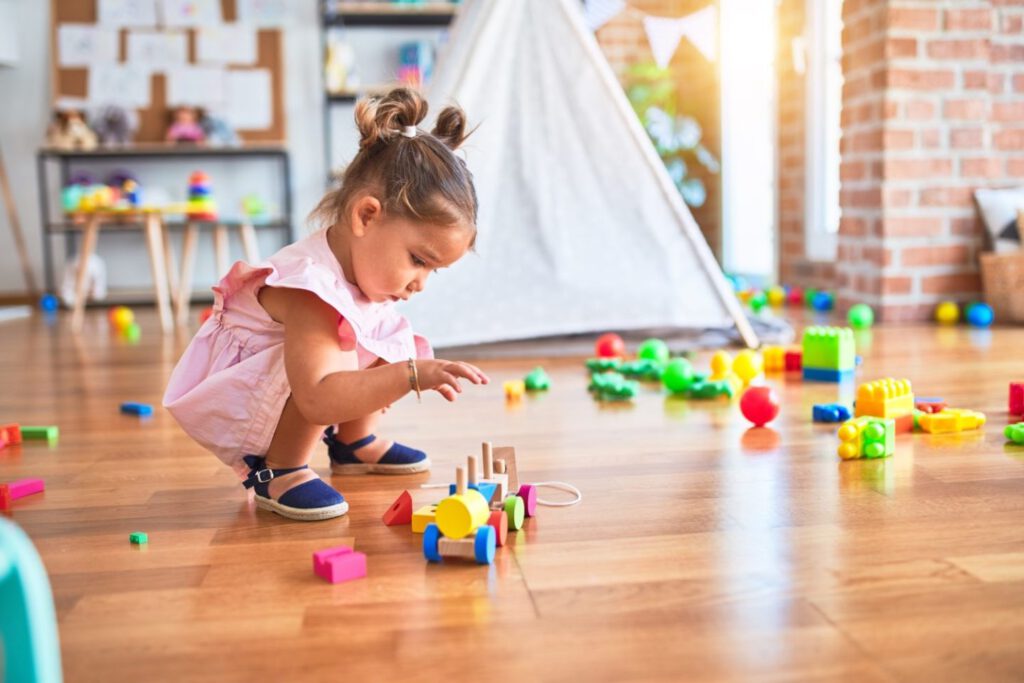A race to the bottom? CDC lowers expectations for child development, raising new questions for parents
The CDC has changed its list of children’s developmental milestones for infants and young children, marking the first update of its kind since 2004.
The move has generally been portrayed in the…

The CDC has changed its list of children’s developmental milestones for infants and young children, marking the first update of its kind since 2004.
The move has generally been portrayed in the media as a positive adjustment, with claims that it provides clearer benchmarks and can help identify developmental delays early.
However, the update essentially moves the milestones later and later – following a similar trend in academic standards across the nation.
Is this something to be celebrated, or is it one more example of lowering standards?
Shifting the goalposts to later ages
The supposed reasoning behind the update is that the earlier milestones used only 50th percentile data, which means that only half of the children were expected to reach them at a specific age.
The updated checklist moves milestones back so that 75 percent of children should reach them at a given age. One news report claims it’s necessary for “eliminating unnecessary confusion and alarm while ensuring children who need additional evaluation and resources are properly identified.”
What the article doesn’t highlight, however, is that the changes effectively move developmental milestones to older ages.
An article from the American Academy of Pediatrics details the changes. In short, one third of the original milestones were moved to different ages, and of those moved, just over two-thirds were moved to an older age.
In other words, the CDC is shifting developmental goalposts later and later for infants and young children.
Response to pandemic may explain speech delays
One reason for moving the developmental goal posts may be the learning loss resulting from the COVID-19 pandemic.
Jaclyn Theek, a clinic director and speech-language pathologist at the Florida-based Speech and Learning Institute, has raised the alarm over the increase in babies and toddlers she is seeing with speech delays.
“We’ve seen a 364% patient increase in patient referrals of babies and toddlers from pediatricians and parents,” she said.
Before the pandemic, only 5% of patients were babies and toddlers, she told reporters. Now it’s 20% of her patients, with parents calling it “COVID-delayed.”
Theek says the widespread use of face masks could be affecting children’s speech development, as babies start learning how to read lips as young as 8 months old.
“There’s no research out there yet saying that this could be causing speech and language delays. But, most definitely, I’m sure it’s a factor,” she said. “It’s very important that kids do see your face to learn, so they’re watching your mouth.”
Repeating the pattern elsewhere
Other detrimental effects on children have included a decrease in academic performance after widespread remote and virtual learning options, which tend to hurt minority and low-income students hardest.
Even before the pandemic, however, the U.S. educational system was easing academic standards, often to the detriment of students: Just one example is Virginia, where the reading scores of fourth- and eighth-grade students dropped after the state loosened academic standards and accountability.
Even the Washington Post argued that easing these standards did not help children.
“Some critical (Standards of Learning) tests, such as fifth-grade writing, were eliminated; score standards were adopted that made it easier for students to pass; and changes in accreditation regulations let schools off the hook for their failures,” the newspaper’s editorial team wrote.
Diagnosing the problem’s source
Instead of constantly adjusting developmental milestones and academic standards, parents and educators should question what’s causing this downward shift in the first place.
Earlier critics of the U.S. educational system such as John Taylor Gatto predicted schools would never achieve the successful education of students without changing its current approach.
“No one believes anymore that scientists are trained in science classes or politicians in civics classes or poets in English classes,” he said in a 1990 speech where he accepted the New York City Teacher of the Year award. “The truth is that schools don’t really teach anything except how to obey orders.”
Gatto said in his speech that U.S. students ranked “at the bottom of nineteen industrial nations in reading, writing and arithmetic.”
Today’s rankings aren’t much better. The Programme for International Student Assessment (PISA) released a lackluster report in 2018, with the U.S. ranking roughly the same – in the middle of the pack – for all countries tested.
“The trend lines of United States’ mean performance in reading since 2000, mathematics since 2003 and science since 2006 are stable, with no significant improvement or decline,” the report concluded.
When viewed against the broader sweep of human history, the academic standards now in use are substantially lower than what was required in 20th-century American schools (this 1912 eighth-grade exam serves as an interesting example).
Homeschooling: A better alternative
For too long parents have counted on so-called “expert institutions” such as the CDC and public schools to help us raise our children. However, current events have started exposing important flaws and concerns within the educational system.
Thankfully for many children, alternatives exist to the current public educational situation – including the choice to homeschool. If the pandemic has taught us anything, it’s that parents are better equipped to handle their children’s education than they may have previously thought.
One of these parents is Tera Thomas, who withdrew her children to homeschool in Virginia after schooling went virtual in response to the pandemic.
“You just are kind of at the mercy of whatever they’re choosing to do – ‘one size fits all’,” she said of her experience in the public schools.
Thomas chose to continue homeschooling even after in-person learning resumed.
“We wanted there to be more value in their education, more individualized (attention), more freedom to explore and do things,” she said.
Like Thomas, an increasing number of parents are opting out of public education with its continually changing developmental and academic goalposts.
Instead of closing our eyes to the problems facing our students, let’s choose to address them and raise a next generation of mature, responsible citizens who not only thrive, but also excel in the real world – long after their schooling has ended.



